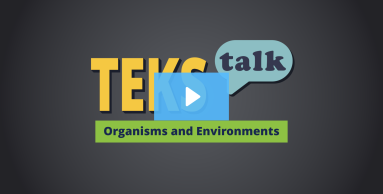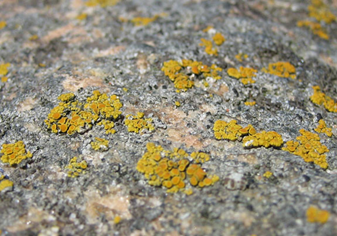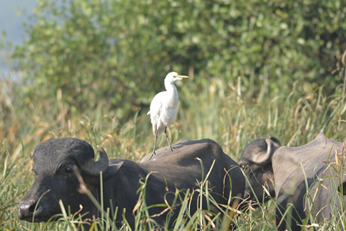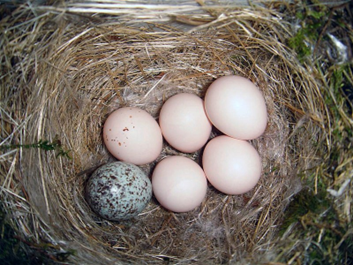- Science
- Grade 6
- Organisms and environments
Science.6.12.B

Knowledge and Skills Statement
The further explanation is designed to be a resource for educators that helps them better understand the topic their students are learning. Further explanations may be written at a more complex level than would be expected for students at the grade level.
The impact of the relationship on each organism must be identified in order to recognize the form of symbiosis that exists between two organisms.
An example of mutualism is the formation of lichen. Lichen is a partnership of fungus and algae. The fungus benefits from the relationship because it receives nutrition from the photosynthetic algae. The algae benefit from the fungus because the fungus is the organism in the partnership that grows and spreads, providing more space for the algae to grow as well.
User Hedning on sv.wikipedia, Public domain, via Wikimedia Commons
An example of commensalism is the relationship between egrets and cattle. The egrets eat the flies and bugs that get stirred up as the cattle graze, however the cattle do not benefit from the egret.
There are several types of parasitism. One type is brood parasitism. Most species of cuckoos and all cowbirds engage in brood parasitism. The cuckoos and cowbirds do not build their own nests. Instead, they place their eggs in the nests of other species and leave them there for the nest builders to care for.
Galawebdesign, CC BY 3.0 <https://creativecommons.org/licenses/by/3.0>, via Wikimedia Commons
Research
Lord, Joshua. “Science Shorts: How Symbiosis Creates Diversity.” Science and Children 47, no. 5 (January 2010): 64–66. http://www.jstor.org/stable/43174709.
Summary: How Symbiosis Creates Diversity explains a variety of ways two organisms may interact in which at least one benefits from the other. An example 5E lesson is shared along with extension ideas.



